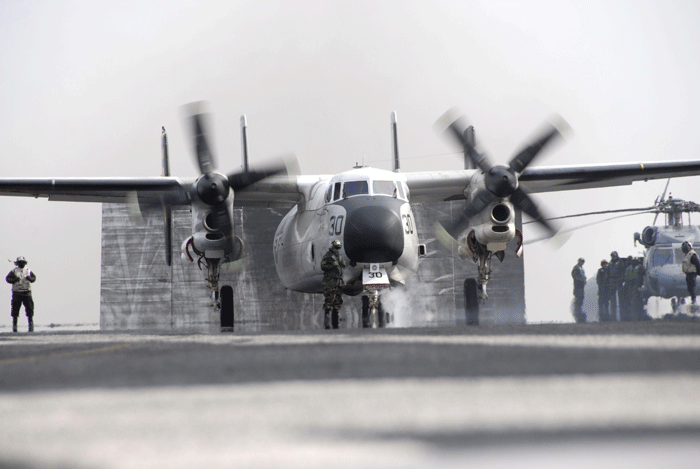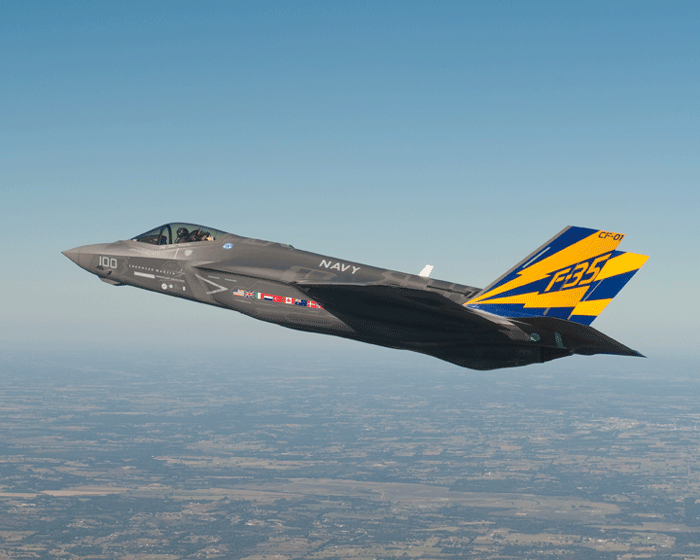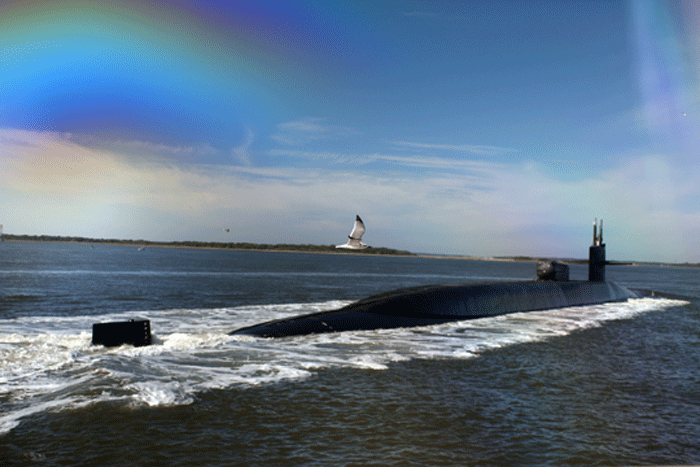04/27/2011 – In late March 2011, Second Line of Defense visited San Diego to discuss the evolution of the USN-USMC team as seen by key members of the staff of Naval Air Force, U.S. Pacific Fleet. At a time when the nation is remembering the 100 years of Naval Aviation, it was very appropriate to visit a command central to shaping the next decades for Naval Aviation.
The Command Mission is identified as follows: The Naval Air Forces’ mission is to man, train, equip and maintain a Naval Air Force that is immediately employable, forward deployed and engaged. We Support the Fleet and Unified Commanders by delivering the right force with the right readiness at the right time with a reduced cost…today and in the future.
In a wide-ranging discussion with Rear Admiral Jim Beebe USN, retired, currently the Executive Director of the command, the evolution of the USN and its air component was an important focus of attention. Beebe had extensive experience in the submarine community, and served in his last active duty position as Deputy Commander Submarine force, U.S. Pacific Fleet.
http://www.navy.mil/navydata/bios/navybio.asp?bioID=40

Rear Admiral (Retired) Beebe During the March Interview; Photo Credit: SLD 2011
SLD: One of the challenges I see is that so much of the discussion about USN platforms is too often platform centric. I like to argue that no platform fights alone, and we often lose sight of the broader mission sets and the capabilities necessary to achieve mission success.
Beebe: Right. I think we have to fundamentally start with what the Navy’s all about. It has always been about protecting the sea-lanes and influencing coalitions. And the tools that the Navy brings to bear with respect to being able to do this virtually anywhere in the world without reliance on sovereign territory are substantial and complimentary. That autonomy and extensive tool kit fundamentally defines what the Navy and USN-USMC Naval team brings to any contingency or issue that we have in the world. The mission set spans the whole range of military operations from humanitarian assistance and disaster relief to major combat operations and involves surface, subsurface and aviation assets in almost every scenario. Naval tools work together and their sum is in fact greater than the individual parts..
If you look at points of engagement today, Naval forces are actively involved in protecting the sea-lanes and influencing coalitions. The humanitarian assistance we have and continue to provide in Japan, the Naval assets that we have operating in the Mediterranean off the coast of Libya and certainly the sustained support we provide in the Persian Gulf and Arabian Sea points to the Navy’s relevance in helping shape and influence the global environment. As I think collectively about the capabilities our Navy brings to bear, it is the ability to flex to any of these contingencies at any given time and at any location throughout the world. That is the fundamental nature of the way we operate. The value of our Navy is often found in its non-kinetic missions. Our presence throughout the globe is essential in this day and age of a global economy and in the face of the Chinese and their resurgence and build-up of their military. As well, clearly we are concerned with specific issues of anti-access and area denial throughout the global domain.
In the global scheme, this forward presence allows us to influence the sea-lanes and build coalitions and underscores the importance of our Navy as it relates to our economy and ability to support the free and open flow of trade and commerce. In retrospect I feel that our Navy is the forgotten global economic insurance policy that many do not fully appreciate.
SLD: Clearly one challenge, notably in the Pacific with its immense size, is to have enough assets to influence actions in the maritime domain and deep inside the littorals. And here we have been looking at the evolution of the Amphibious Ready Group (ARG), the introduction of the LCS, the evolution of Aegis and the concomitant evolution of the carrier battle group.
Beebe: That makes absolute sense. And really, what you’re hitting at is a point where again, what’s unique to the Naval service is our ability to flexibly adapt complimentary assets, tools in our tool kit, to bring the sea base into play.

A C-2A Greyhound assigned to the Providers of Fleet Logistics Combat Support Squadron 30 prepares to take off from the aircraft carrier USS Ronald Reagan. Ronald Reagan was operating off the coast of Japan to provide disaster relief and humanitarian assistance as directed in support of Operation Tomodachi.
Credit: USN Visual Service, March 20, 2011
For example, the recent operations of the USS Ronald Reagan demonstrate that flexibility. We configured the Reagan to be able to support Japanese relief efforts by steering operations toward the use of embarked and augmenting helicopters and even adjusting procedures to accommodate Japanese helicopters landing on board. So certainly when we have that capability and inherent capacity of this sea base, we bring to any theater the opportunity and flexibility of the integrating weapon systems to that sea base to do what needs to be done.Another aspect, which will allow us to expand the influence of our sea base, is our basic acceptance and embracing of unmanned systems into not only the Navy, but the other services. When you think of unmanned systems, the ones that the Navy plans to field will expand the influence of that sea base. It extends the reach, expands the geographic influence, and enlarges the functional effectiveness of the sea base in whatever theater it operates.
What’s critical in making that expansion effective is the linkage of sensors to deliverable weapon systems that we have in the inventory, both manned and unmanned. The successful linking of sensors to weapon systems will act as a force multiplier that delivers more influence in any particular theater. Obviously, with unmanned systems, the ability for these systems to loiter a lot longer in a particular area of interest, again brings capability that I think would be very advantageous to us in the future.
SLD: And of course adding the F-35B and the F-35C to the mix will add significant 360-degree situational awareness, and support for both kinetic and non-kinetic operations.
Beebe: Absolutely. The F-35 brings advanced capabilities in executing the Maritime strategy. The F-35’s ability to link and leverage the system of systems is going to be critical. You also want to do this with high confidence, so you don’t want single point failure vulnerability. You also need to deal with the challenges of just being able to accommodate the required bandwidth and manage the analysis and movement of significant amounts of information. These are known challenges that are being addressed as we field this new and exciting aircraft.

F-35C in Flight
Photo Credit: Lockheed Martin
SLD: One aspect of the evolving capability for the USN-USMC team is the modernization of Aegis and the introduction of the F-35. How does this affect the future?
Beebe: From a Naval Aviation perspective, we’re very committed to the F-35. And certainly, when you think of the F- 35 and the global Aegis partnership, our international partners play an important role in the F-35 acquisition strategy.The opportunity to work with international partners in the future with F-35 assuming that we share some of the inherent capabilities available with this aircraft creates tactical and strategic partnering venues and expands the capabilities and reach beyond just our Department of Defense (DOD) assets.
We need to think about that and how we leverage ourselves with our partners in the future with this very capable aircraft. Obviously we are all sensitive to the current economic situation, and certainly, the potential pressures that it will have on DOD and Navy so it’s a win-win situation to at least be aware of opportunities where we can share deployed capabilities among our close international partners.
SLD: The newly enabled ARG and the deployments of the LCS suggest that the USN-USMC team will be engaged differently in the future in the littorals. How do you approach thinking about the littorals, particularly coming from your submarine background?

The guided-missile submarine USS Georgia transits the Atlantic Intercoastal Waterway to Naval Submarine Base Kings Bay, Ga. The sub was returning from pre-deployment testing.
Credit: USN Visual Services: 11/24/08
Beebe: We have a certain way of defining littorals today. The whole issue of anti-access area denial as influenced from the land base towards the sea is dynamic. I think we’re going to have to be very careful on what we define as littorals in the future. It could be several hundred miles out, it could even be a 1,000 miles out based on the proliferation of the type of weapons systems that are coming from the land base of the nation we’re trying to influence. How do we protect and leverage the influence from these assets that we send in those “littorals” of the future? The Navy’s role will be huge and how we operate will be critical in the debate and discussion to follow.
As a Navy we need to think differently regarding how we influence the littorals in the future. I’m a submariner by professional experience, now living in the aviation world. We have the ability to influence access and deny potential adversaries from the sea. We must however be constantly aware of and flex to the changing landscape of risk from the land as it influences the littoral seas.
SLD: As a former submariner, how do you think the new SSGNs might be used in this mission set?
Beebe: The SSGN is a very exciting weapon system and I think the way that a lot of the combatant commanders look at this weapon system right now is from the perspective of strike. The biggest benefit of SSGN is what I feel we haven’t thought about that could be delivered from this platform. The SSGN bring the opportunity for delivering payload. If you look at it as a stealth platform that can deliver payload and define payload however you want to in the future out of those 24 tubes, it brings unlimited war fighting capability to future challenges.

